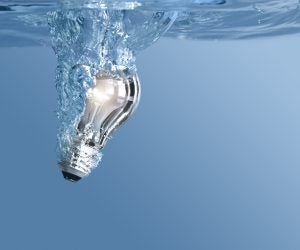 Can strategic pricing programs motivate people to save water and energy?
Can strategic pricing programs motivate people to save water and energy?
Our new paper, Examining conservation-oriented water pricing and programs through an energy lens, suggests the answer is yes – but there are other factors besides pricing at play in programs’ success.
Our findings support the notion that water is conserved through these utility programs, which aim to encourage people to use water wisely. Further, because of the inextricable link between energy and water, known as the energy-water nexus, energy demand and associated carbon emissions lower in tandem with water demand. In other words, programs that save water also save energy, as well as cut pollution.
However, there’s a gap when it comes to awareness of water use and prices in the U.S. (I, for one, have no sense of how much water my roommate and I collectively use, or its cost since water is included in our fixed monthly rent.) The paper concludes that in order to get the most energy savings through water pricing and programs, utilities need to do more to educate customers and promote water conservation: When consumers are aware not only of their rates, but also of their own use, they are empowered to make water-efficient choices. Moreover, the U.S. needs a national standard for collecting and reporting water data, and data needs to be made public for analysis.
The study
Initially, we sought to explore how conservation pricing – or prices that provide an economic incentive for people to use less water – can potentially change consumer behavior and reduce water demand and therefore energy demand. We wanted to see the connection between conservation pricing for water and carbon pollution from electricity production.
As case studies, we chose four distinct water utilities, from different regions in the country and each with a unique conservation rate structure. But very early on in the research, data gaps, inaccuracies, and inconsistencies across the American water sector became clear.
This made it difficult to tease out the effects of conservation rate structures on consumer behavior. Behavioral changes don’t happen overnight. In the time it takes to see effects, there are other changes taking place in the broader economy, climate, and population. Isolating the effects of the conservation rates requires controlling for these other external factors, which is nearly impossible without complete and accurate water-use data. These data gaps hinder progress toward strategically using water conservation as an energy-efficiency tool.
With a national standard for water data collection and perhaps a centralized database, researchers and program designers could better understand water flows and use, and have the resources needed to perform rigorous analysis. This would open the door for sound conclusions and well-informed decision-making around the energy-water nexus.
Importance of education
The data gaps drove us to situate those rates in the context of the utilities’ broader conservation plans. While conservation plans look different across utilities, they generally include drought restrictions on water use, rebates for efficiency measures, and customer education. Program success depends on consumer behavior, as well as the conservation knowledge and practices of the city as a whole. However, a disparity exists between how much water many customers think they are using, and how much they actually are using.
Outreach and education can help to bridge that disconnect. When programs are designed with outreach and education baked-in – like informing the public about why water conservation is necessary, where its water comes from, and specific actions needed to reach conservation goals – they are more successful in encouraging people to conserve.
Advanced metering
A critical first step in educating people about water use may be around advanced metering infrastructure (AMI) for water, which is a two-way communication system that enables the utility to send real-time information so the customer can react. Customers can see how much water they use and compare their current use to historical use (and, in some cases, compare their use to their neighbors’). Such smart meters are already far more prevalent in the energy sector, and lessons learned from the years of installing and using smart electric grids are valuable for the water sector.
AMI boosts outreach efforts on conservation rates, which are typically tiered based on customer use. For example, AMI feedback enables utilities to alert customers when they are close to exceeding a specific water-tier limit and entering a higher-priced tier. Where traditional bills tell customers the total water used a month ago, real-time feedback allows for timely adjustments. This can help people budget and meet conservation goals, which in turn can reduce how much energy the water system uses.
Studies show AMI has also expanded knowledge of the energy embedded in water (i.e. the energy needed to withdraw, treat, and transport water), which is important for both water utilities who pay high electric bills, and customers who incur those costs through higher water bills.
The U.S. has a long way to go before we can perform robust studies on the effects of conservation rate structures on water and associated energy demand. But with well-informed customers and rates shaped by accurate data, we can begin to make progress toward successful and innovative conservation water rates, saving both water and energy.
You can read the full paper here.
Photo source: istock/nicholas_









